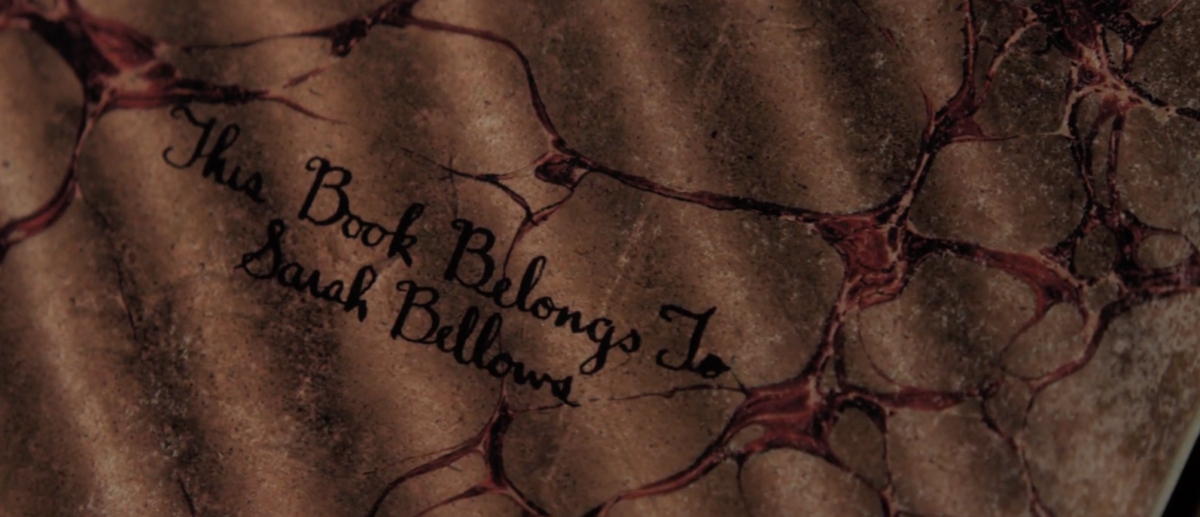Books
Insight Editions Releasing ‘Scary Stories to Tell in the Dark: The Haunted Notebook of Sarah Bellows’

“It’s 1968 in America. Change is blowing in the wind . . . but seemingly far removed from the unrest in the cities is the small town of Mill Valley, where for generations the shadow of the Bellows family has loomed large. It is in their mansion on the edge of town that Sarah, a young girl with secrets, turned her life into a series of scary stories — stories that have a way of becoming all too real for a group of teenagers who discover Sarah’s terrifying prose.”
“Scary Stories to Tell in the Dark: The Haunted Notebook of Sarah Bellows” is a forthcoming companion to the Guillermo del Toro–produced film, in theaters August 9.
Designed to resemble the notebook seen in the film, its pages feature frightening stories inspired by the movie and dozens of horrifying and intricate sketches and color artwork. Also included is a behind-the-scenes section, filled with concept art and unit photography, showing how director André Øvredal and producer Guillermo del Toro adapted Alvin Schwartz and Stephen Gammell’s iconic ’80s and ’90s children’s horror books for the big screen.
The book ships around August 13th. Order it here.

Books
‘Halloween: Illustrated’ Review: Original Novelization of John Carpenter’s Classic Gets an Upgrade

Film novelizations have existed for over 100 years, dating back to the silent era, but they peaked in popularity in the ’70s and ’80s, following the advent of the modern blockbuster but prior to the rise of home video. Despite many beloved properties receiving novelizations upon release, a perceived lack of interest have left a majority of them out of print for decades, with desirable titles attracting three figures on the secondary market.
Once such highly sought-after novelization is that of Halloween by Richard Curtis (under the pen name Curtis Richards), based on the screenplay by John Carpenter and Debra Hill. Originally published in 1979 by Bantam Books, the mass market paperback was reissued in the early ’80s but has been out of print for over 40 years.
But even in book form, you can’t kill the boogeyman. While a simple reprint would have satisfied the fanbase, boutique publisher Printed in Blood has gone above and beyond by turning the Halloween novelization into a coffee table book. Curtis’ unabridged original text is accompanied by nearly 100 new pieces of artwork by Orlando Arocena to create Halloween: Illustrated.
One of the reasons that The Shape is so scary is because he is, as Dr. Loomis eloquently puts it, “purely and simply evil.” Like the film sequels that would follow, the novelization attempts to give reason to the malevolence. More ambiguous than his sister or a cult, Curtis’ prologue ties Michael’s preternatural abilities to an ancient Celtic curse.

Jumping to 1963, the first few chapters delve into Michael’s childhood. Curtis hints at a familial history of evil by introducing a dogmatic grandmother, a concerned mother, and a 6-year-old boy plagued by violent nightmares and voices. The author also provides glimpses at Michael’s trial and his time at Smith’s Grove Sanitarium, which not only strengthens Loomis’ motivation for keeping him institutionalized but also provides a more concrete theory on how Michael learned to drive.
Aside from a handful of minor discrepancies, including Laurie stabbing Michael in his manhood, the rest of the book essentially follows the film’s depiction of that fateful Halloween night in 1978 beat for beat. Some of the writing is dated — like a smutty fixation on every female character’s breasts and a casual use of the R-word — but it otherwise possesses a timelessness similar to its film counterpart. The written version benefits from expanded detail and enriched characters.
The addition of Arocena’s stunning illustrations, some of which are integrated into the text, creates a unique reading experience. The artwork has a painterly quality to it but is made digitally using vectors. He faithfully reproduces many of Halloween‘s most memorable moments, down to actor likeness, but his more expressionistic pieces are particularly striking.
The 224-page hardcover tome also includes an introduction by Curtis — who details the challenges of translating a script into a novel and explains the reasoning behind his decisions to occasionally subvert the source material — and a brief afterword from Arocena.
Novelizations allow readers to revisit worlds they love from a different perspective. It’s impossible to divorce Halloween from the film’s iconography — Carpenter’s atmospheric direction and score, Dean Cundey’s anamorphic cinematography, Michael’s expressionless mask, Jamie Lee Curtis’ star-making performance — but Halloween: Illustrated paints a vivid picture in the mind’s eye through Curtis’ writing and Arocena’s artwork.
Halloween: Illustrated is available now.















You must be logged in to post a comment.